

digitaldingus Review
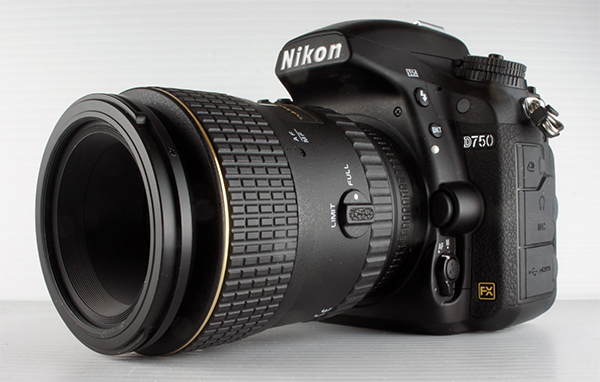
100mm f/2.8 Macro AT-X Pro D
(for Nikon Cameras)
from Tokina
October 21, 2016
Introduction
It's been about a year to the day when I initially received the Tokina 100mm f/2.8 Macro AT-X Pro D lens for the Nikon D750, so I've been using it off and on for quite some time. From prior ownership of a Nikon DSLR (D100), Tokina has been a reliable lens manufacturer of particular lenses where a Nikon (and Canon) owner might be more constrained with their official name brand lenses.
In my opinion, Tokina has been producing better lenses over the years (i.e., more reliable, improved quality). This more than likely has to do with lens manufacturers refining and retuning their manufacturing process, gradually increasing quality and adding features, without costing too much overhead in one fiscal year. Eventually, after several years of progressing year after year, Tokina has presented themselves as a very affordable lens company for Nikon and Canon consumers who are looking to fill their collection with much-needed lenses..
For photographers who concentrate on one or two of the most important lenses they will need, and spend the cash accordingly on the expensive Nikon or Canon brands, Tokina is a company which can offer a very reasonable price for those lenses which a photographer may not dedicate as much funds in their lens war chest.
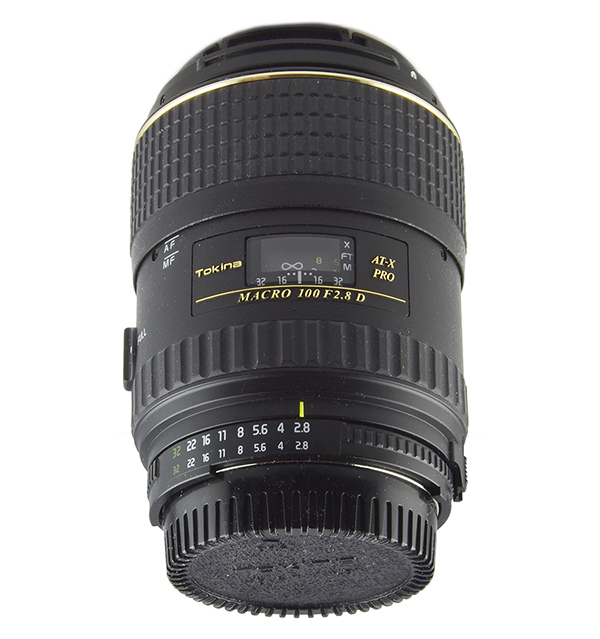
This Review Is Of The Import Model
In this review, I'll be presenting the import model of the Tokina 100mm Macro. I happened to find a new import model for about $100 less (including shipping) than the US version. I've purchased so-called "gray market" products before, and I've never had a problem. Yes, there are risks as most manufacturers won't honor the warranty outside of the geographic region you're supposed to buy the product from, but I've never had a product fail within the warranty period. Is the import version different from the US version? I'm going to say absolutely not, except for the different UPC on the outer box it is shipped in. All mechanics work the same, and the lens has the exact same specifications.
Why Buy A Macro Lens? Why 100mm?
The question might seem obvious, but I do observe questions like these come up ever so once in a while. A macro lens allows the photographer to capture their subject much more closer than using a lens of the same focal length. Most lenses require the photographer to be over a foot or two away from the object. This is because of the lens construction. Thinking of it another way, hold a glass of water, in your hand, stretched out all the way. Then bring the glass of water to about 6-inches from your nose. This is the same process of a macro lens . It's allowing you to get a much closer look at your subject. Notice how much of a difference there is when a glass of water is only a foot or two away from your nose versus 6-inches.
With a macro lens, you'll be able to capture your subject and just about fill your ENTIRE IMAGE with that subject. True, you could simply use a telephoto lens and zoom in, and this would be considered more of a close-up image, but you will lose definition and sharpness, depending on the quality of the lens...and more importantly...the aperture at which you can zoom. Most zooms won't allow you to zoom in at a constant f/2.8, and those that do...yer gonna pay for it. Not to mention, the size of the f/2.8 lens. All things considered, you're better off with a fixed aperture macro lens (f/2.8 or less), as this will allow much more magnification, as well as a better image quality when being forced to step down the lens.
The answer to the second part of the question, which is the focal length choice, is mostly defining what you want to take macro images of, and how close you want/need to be to the subject. For example, if you want a 50mm macro lens, you will need to be much closer to your subject than if you had a 100mm macro. A benefit, is the 50mm macro will be significantly lighter. This qualifier should already stimulate your brain into figuring out what lens will best for you. For me, I personally prefer a 100mm macro. Yes, it is heavier than a 50mm macro, but I don't have to be so close that the subject will move away in fright, and in some cases, might be even safer to be further away from the subject (i.e., scorpions, spiders, bees, etc.)
An Odd Thing About Macro Lenses...
So, you're probably all excited that you can get a f/2.8 lens for so cheap, right? Well, understand that as you get closer to the 1:1 ratio of your subject which is the reason why you got the lens in the first place (right?)...the aperture is going to change..
In the case with the Tokina 100mm, do not be surprised when your aperture readout will say something between f/4 and f/5.6. This is because of the way the lens barrel moves away from the imager (this is a Macro lens, not a FIXED PRIME LENS), resulting in less light getting to the imager. For a quick estimation, just assume a 100mm lens at a 1:1 ratio, will need to be twice as far away from the imager. In this case, the lens barrel will extend to roughly 200mm. Twice as far away. This means your light availability just got reduced as well (by half) and now you're at f/5.6. Adjusting the shutter speed will not change the aperture. The only thing which will change the MAXIMUM aperture is the distance you are from the subject. Try it. Move away from your subject, say a few feet, and the aperture will go to f/2.8. Get closer, say a foot or less, and your aperture will be around f/5. Tokina briefly explains this in their Tokina "All Inclusive" manual, which gives a briefing on 9 different lenses. One of the more frustrating ways to present a product manual to the photographer, I must say. Below is an excerpt from that manual, referring to the aperture change.
The F-value shown on the lens indicates the brightness of a subject located at infinity. If the macro magnification is raised, the brightness of the subject will decrease. This reduced brightness is called the "effective F-value," while the exposure correction corresponding to the decrease in subject brightness is called "exposure magnification."
If you are doing macro photography using a Nikon mount, the display on the camera body will indicate a change in aperture as the focus distance approaches the minimum value, even when the lens's F-value is set to F2.8 (fully open), until the effective F-value finally reaches F4.5.
- Tokina 100mm Macro Instruction Manual
The Focus Clutch
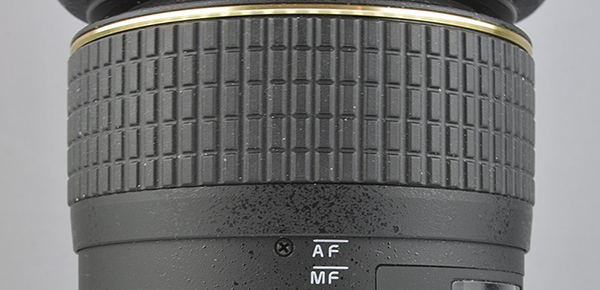
Tokina has designed an interesting way to provide manual and autofocus modes on this lens. To engage the manual focus, slide the focusing ring back towards you. To disengage and go back to auto focus...simply grab the focusing ring and push it away from you (forward). When autofocus is engaged, you'll see the AF AND MF wording. When the MF is engaged only, you will see the MF lettering with the AF covered by the focus ring.
Packaging
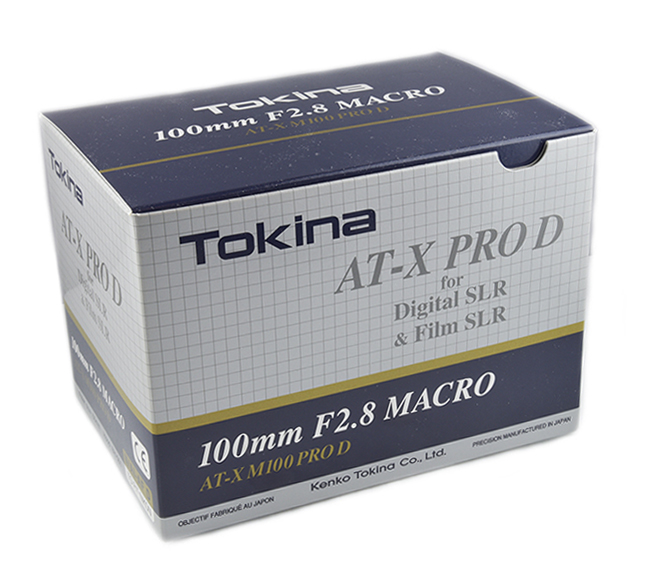
Packaging for the Tokina 100mm f/2.8 Macro AT-X Pro D came to me in a nice box with good cardboard protection inside. I was a little surprised to see only a creamy plastic bag with the lens in it versus some sort of tote bag. Not a big deal.
Tokina 100mm Macro With BH-551
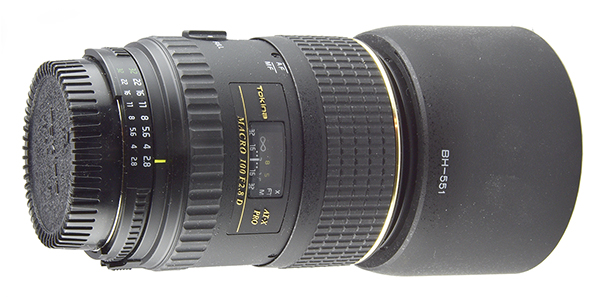
The Tokina 100mm f/2.8 Macro AT-X Pro D comes with the BH-551 bayonet cover. This is a very useful accessory, and I've used it on many occasions to keep out as much unwanted light (as well as reflections) as possible.
Tokina 100mm f/2.8 Images
Here are some samples I took with the Tokina 100mm f/2.8 paired with the Nikon D750. As mentioned above, one of the reasons to own a 100mm macro, is to capture your subject without being so close as they get irritated and in this case...flutter off. I was about 3ft away in the example below, and this was not ideal, as I would have preferred being within 6-inches. With a 50mm macro, there would have been no chance of getting this butterfly because it was sensing my movement from even 3ft away. In more ways than not, this probably looks more like an example of a close-up with a telephoto lens, because I couldn't get extremely close. However, for a 100mm macro, I can't complain too much.
Additional Images
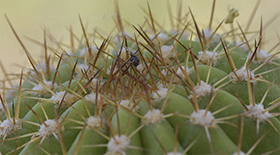 Original Crop (2.88MB) Original Crop (2.88MB) |
 | 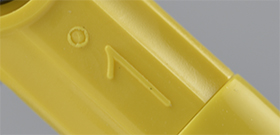 Original Crop (1.12MB) Original Crop (1.12MB) |
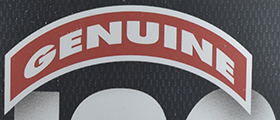 Original Crop | Original Image (16.53MB) Original Crop | Original Image (16.53MB) |
 | 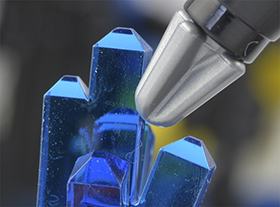 Original Crop (1.22MB) Original Crop (1.22MB) |
Pros
Above-average quality lens for the price
9 Elements in 8 Groups
Surprisingly great bokeh
Impressively sharp when using handheld; Outstanding when using a tripod
Manual Focus and Auto-Focus Clutch System
No issues with my Nikon D750
Stability ring (closest to camera) and focusing ring have a rubber grip material
Very affordable
Cons
None observed
Observations
f/2.8 aperture will gradually turn into f/5.6 as you get closer to your subject.
Suggestions
A future upgrade to compete with the latest Nikon 105mm Micro-NIKKOR release which contains 14 elements in 12 groups
Conclusion
The Tokina 100mm f/2.8 Macro AT-X Pro D does a really good job for a lens which can be had for $275-$400. The price range is reflective of whether the buyer wants to purchase this lens as an import or the US version which will carry a warranty. Of course, the real question is whether the lens is a match against its Nikon or Canon competitor, and I will say for the most part...it certainly is. However, we have to be realistic, and this is where the prices of these lenses could be justified for the extra $450 or more.
I cannot speak for Canon macro lenses as I don't shoot Canon, however, Canon is definitely on par with Nikon's lenses, so I view them in the same level in quality and precision (each brand has their greats and not-so-greats, but that's another review entirely). If we look at the number of elements and groups in Nikon's latest AF-S VR Micro-NIKKOR 105mm f/2.8G IF-ED, we see there are 14 elements in 12 groups versus Tokina's 9 elements in 8 groups. In my using the Tokina lens, this more than explains the lens hunting for spot-on when shooting below f/2.8. This wasn't a deal-breaker for me. Why? I wasn't in the market for a $900 Nikon Micro, and my budget couldn't afford it. Anyone with some basic camera knowledge can offset this issue with either having a proven camera to begin with (this does not mean a $700 DSLR is better than a $1500 just because of price, by the way) to use the camera's settings and focusing options to take better control over the lens.
Auto-focusing and elements and groups aside...if you have focusing issues...GO MANUAL. I cannot emphasize this enough. In fact, if I'm getting a little twinkle and grin out of you, then you already know the secret of a great photographer. For the rest, I'll say this: Don't rely on the camera to just hand over an image to you. Get that camera into manual mode and fine tune your camera so that YOU TELL YOUR CAMERA what you want. I tend to fall into the trap of easy images myself, so I'm gonna read this a few times, too.
Historically, I've experienced this myself. If you buy a camera which initially has questionable and/or limited focusing capabilities, you could be setting yourself up for some serious future challenges if you want to get budget-minded lenses. For me personally, I like to fork out more money on the camera end, and then purchase lenses as I need them along the way.
Considering the overall result of the Tokina 100mm Macro for Nikon DSLRs, it's very convenient focusing clutch system, and the very affordable price (even more affordable if you go through a reputable import dealer), the Tokina 100mm f/2.8 Macro AT-X Pro D (for Nikon cameras) receives a HIGHLY RECOMMENDED.
A Benefit To Higher-Megapixel DSLRs?
From my observations, and previously shooting an Olympus E-10 (4MP images) and then a Nikon D100 (6MP images) thereafter, I'm going to say yes. There is a benefit to be realized here. Due to the amount of extra pixels on today's DSLRs, you can create some stunning post-processing results from your so-so images with just a little bit of editing. The more pixels, the less the chances are of the appearance of over-sharpening. Notice I said appearance. This will vary from one photographer to another, and how good they are at using just enough sharpening to make the image more pleasing to the eye, but at the same time making sure the overall image is not too sharp, resulting in an unrealistic presentation. It's a digital dance of getting it right, but overall, the extra pixels available allow me to go way beyond the processing barriers of say, a decade ago.
A Benefit To APS-C DSLRs?
Oh yes. If you thought the benefits of this lens stopped with owning a higher-megapixel DSLR, think again. If you own an APS-C camera (i.e., a Nikon DX DSLR), your macro capability just got improved significantly. For Canon APS-C DSLRs, your effective focal length is magnified to around 1.6x and a Nikon APS-C DSLR, 1.5x. If you put a Tokina 100mm f/2.8 Macro on the Nikon APS-C DSLR, you'll get an effective focal length of a 150mm Macro lens (as an aside, Nikon calls their macro lenses...micro lenses). So, not only do you have the sweet spot of the macro lens, but you just a massive increase in magnification. And guess what...your aperture value will stay the same as if it was 100mm.
Tokina 100mm f/2.8 Macro AT-X Pro D
From: Kenko Tokina Co., Ltd.
Camera Brand Compatibility: Nikon, Canon
Minimum Aperture: f/32
Elements: 9
Groups: 8
Focal Length: 100mm
Aperture: f/2.8
Lens Type: Fixed focal length
Weight: 540g
UPC: 4-961607-633946 (Import)
MSRP: $399.99
Street Price (USA Version): $350+
Current Price (USA Version): Check Price
UPC

Lens Rating

| AFFORDABILITY |  |
| VALUE |  |
| SHARPNESS |  |
| AUTO FOCUS |  |
| BOKEH |  |
| ACCESSORIES |  |
| PACKAGING |  |
Recommended Lenses
Adverts & Promotions